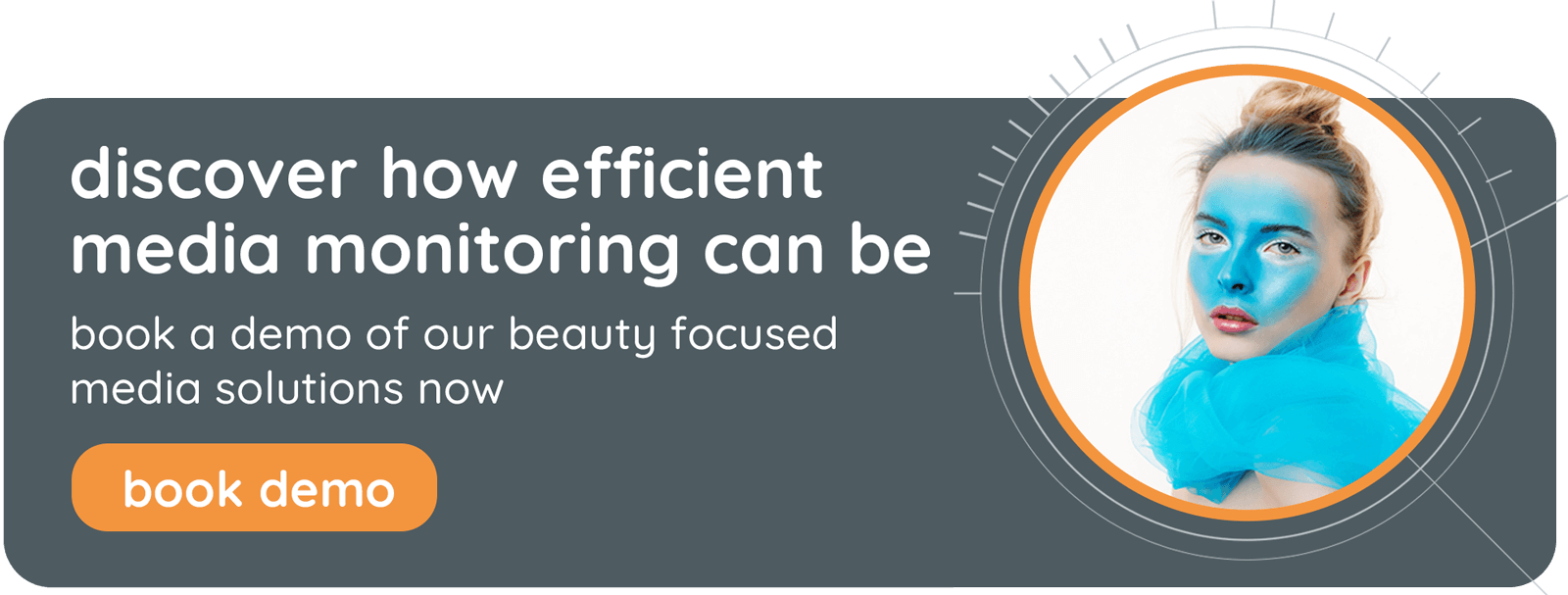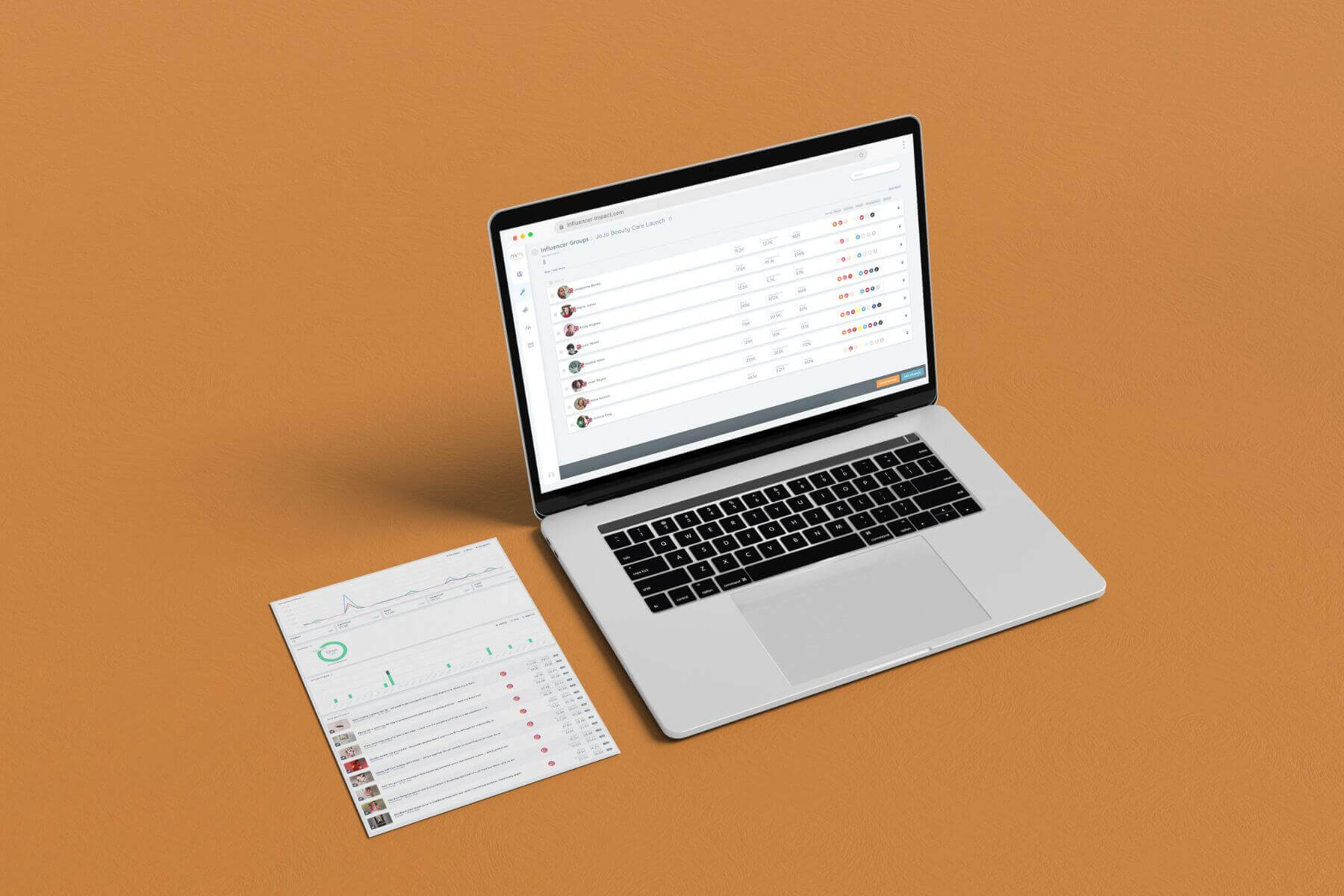Think of the world’s most successful beauty brands. All of them – from Charlotte Tilbury to Glossier – reached their stratospheric success with the help of editorial coverage. There’s a direct correlation between strong media presence and rising revenue, whether your new product has landed a full page feature in Stylist or garnered praise from an influencer.
Because of this, media monitoring is a key component of every marketing strategy. With comprehensive media data, you can identify what drives sales, what doesn’t, and where there are gaps in your presence. However, the standard for what makes an effective media tool is shifting, as analytics platforms face the challenge of tracking both print and digital publications. Add in emerging channels, such as TikTok, and a push for more authentic communications, and the task of choosing a media monitoring partner becomes trickier still.
So, consider this your checklist. Here, we reveal six things all beauty brands should look for when choosing their media monitoring partners ...
1. A Mix of Media Types
Most media monitoring tools will track print publications and online magazines. But what about the smorgasbord of social platforms your consumers populate? With 80% of beauty brands turning to influencer marketing, it’s crucial for your media monitoring tool to track an expanding list of media types.
Look for a platform that covers YouTube, podcasts, TikTok, Instagram and more. Better still, seek analytics that have overcome the challenge of analysing Instagram Stories. Many brands are still tracking Stories with manual data, but there are providers who can do this for you, and provide you with rigorous, actionable insights.
2. Consistent and Comparable Metrics
The most efficient media monitoring tools will let you see all your metrics in one place, and enable you to compare them through a singular, aligned formula. For example, while you may want to view the Reach or Impressions on an organic Instagram post, it’s also useful to benchmark that content against one consistent metric. Seek out a tool that measures earned media value (EMV); a figure that helps you understand what an equivalent mention might have cost you if you’d paid for it as display advertising.
3. Clear and Competitive Benchmarking
In isolation, media monitoring metrics tell you little about your brand’s success. Competitive benchmarking is needed to give context to a magazine mention or influencer post. By using a tool that provides you with competitor performance, you can understand where you rank in the market, and refine your strategy with clear, data-informed goals. You can also review just how much coverage your competitors are receiving and pinpoint the publications and influencers that might be missing from your own PR strategy.
4. Beauty-Focused Data
Beauty is a unique industry with a range of categories, including Fragrance, Skincare, Cosmetics, Hair Color and Hair Care. The hallmark of success in one category may be entirely different in another, resulting in skewed and unreliable data when viewing them as a single group. That’s why it’s important to use a platform that provides you with higher granularity, allowing you to analyse at a category, and even product, level. Not only will this make your benchmarking figures far more accurate, but – if you’re a multi-category brand – it will help you see which parts of your portfolio perform the best.
5. A Global Approach
Finally, ensure your partner can offer a global service, so you can standardise your media reporting across every country your brand is available in. This allows teams to easily compare performance across multiple brands, countries and regions.
6. Reliable and Responsive Support
As your data expands and your goals evolve, it helps to work with a responsive partner who understands your challenges and can create a service to suit your needs. This could mean tracking a bespoke list of influencers for a specific campaign, or identifying key media titles that relate to your target audience. In addition, you want any updates of messaging or data collection to be managed in a timely manner by a team that understands the beauty sector inside and out.
To find out how we can track and benchmark your media programs, book a demo here or have a look at a sample of our data in our recent "Top influencer and product mentions for bronzer and shimmer launches" report.





